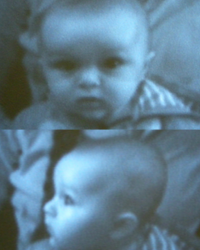What is developmental research and why is it important?

At the Princeton Baby Lab, we study how babies and young children learn to talk, see, and understand the world. This is an exciting time for research on child development, because we have the ability to study how a child’s ability to learn and their experiences work together to support their development.
Our research is important for many reasons. It helps us understand how the developing mind works, how biology and experience shape our lives, how caregivers can best support children’s development, and how we can help children at-risk for poor developmental outcomes. Our main goal is to develop a scientific understanding about how children develop, but our science is useful beyond the geographic and digital borders of universities: it helps us figure out how to improve children’s developmental outcomes.
We depend heavily on the New Jersey community to help us out, so please consider volunteering a little bit of your time for our fun studies. See below for a few of the scientific questions we are trying to answer!
If you are a student and want more information about how to get involved in the research at the Baby Lab, please click here.
If you are a parent or caregiver and want more information about what it means to be involved in our research, please click here for more information.
We wish to acknowledge that the land on which we gather to work, study, and learn is part of the unceded territory of the Nanticoke Lenni-Lenape Tribal Nation.




